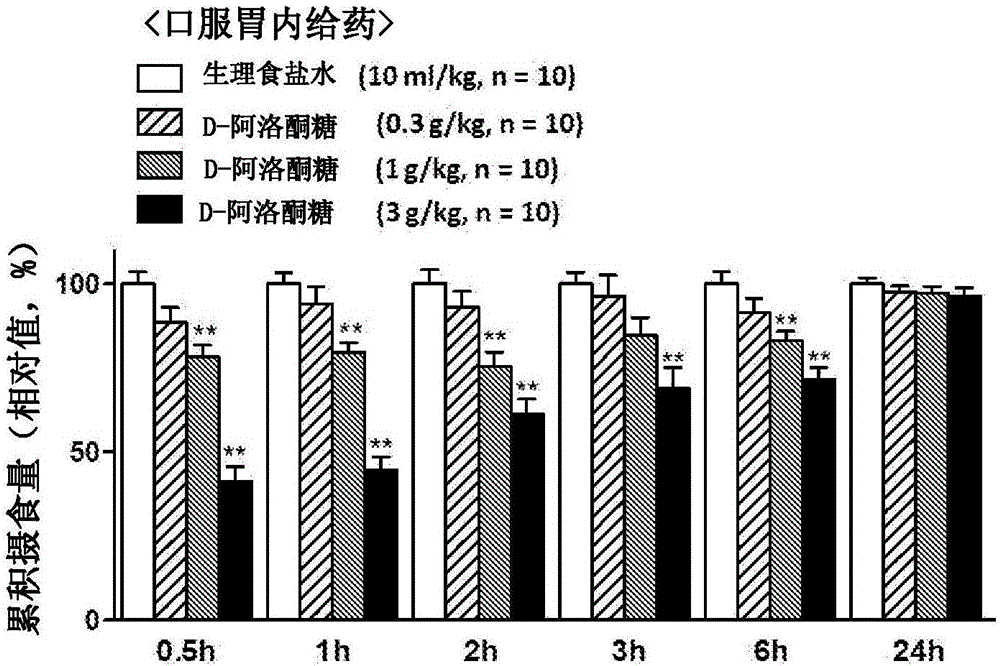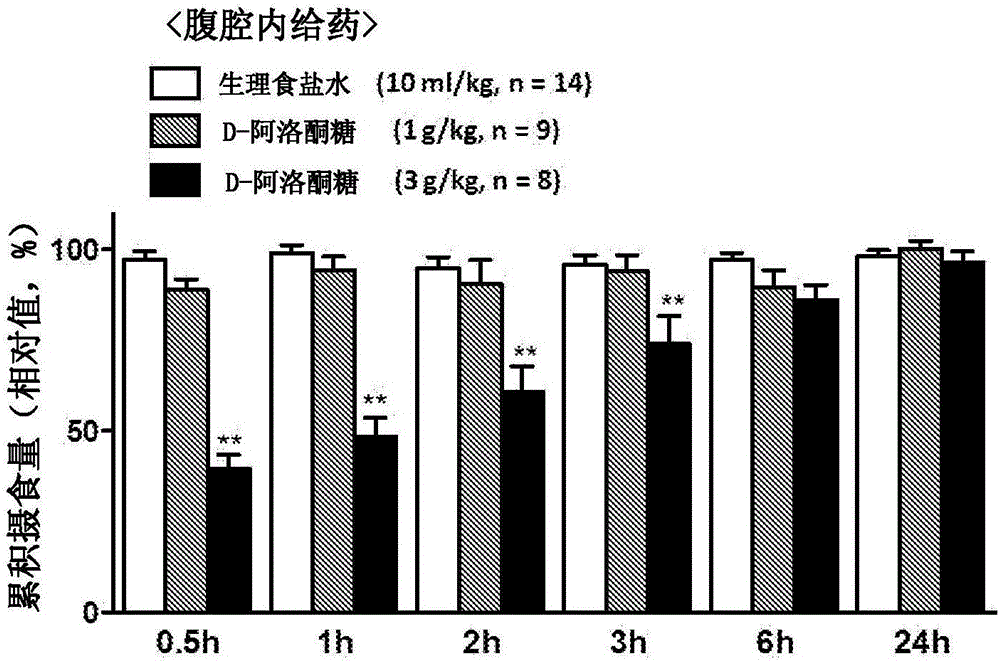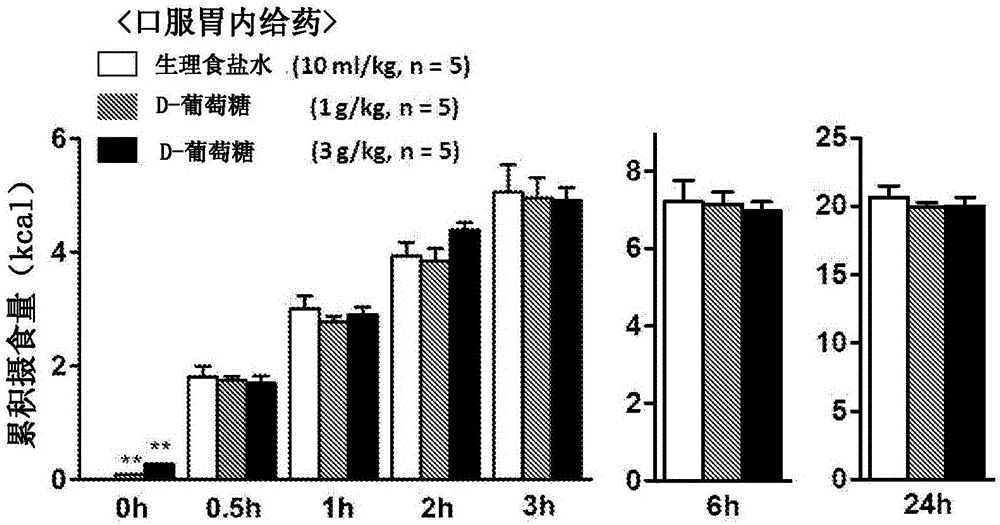Satiety maintaining agent and method for maintaining feeling of satisfaction
A technology for satiety and allulose, which is applied in the field of satiety-sustaining agents or satiety-sustaining agents, can solve problems such as large side effects and gastrointestinal dysfunction, and achieve health improvement, appetite reduction, and satiety-sustaining Effect
- Summary
- Abstract
- Description
- Claims
- Application Information
AI Technical Summary
Problems solved by technology
Method used
Image
Examples
Embodiment 1
[0083] The "food intake reducing effect" of D-psicose was confirmed by the following test in fasted mice.
[0084] experiment method
[0085] As experimental animals, C57BL / 6J male mice were used. The mice were prepared to be domesticated in their respective cages for more than a week to adapt to the environment. After fasting for 16 hours from 18:00 on the day before the experiment, each test liquid was administered orally or intragastrically or intraperitoneally. In each administration, physiological saline (10 mL / kg) was administered as a control group, and D-psicose (0.3 g / kg, 1 g / kg, 3 g / kg) was administered as a test group. ). The concentration of each test solution at this time was 0.3%, 10%, and 30%, respectively. Each solution was administered at 9:45, and mice were allowed to freely ingest CE-2 feed (a nutritionally balanced general feed for mice, manufactured by Japan CLEA) at 10:00, and measured for 0.5 hour, 1 hour, and 2 hours. Food intake over time after ...
Embodiment 2
[0093] In order to deny that the above-mentioned food intake reducing effect is caused by the unpleasant feeling or disgust associated with the ingestion of D-psicose, a conditional taste aversion test was carried out for oral administration of D-psicose.
[0094] experiment method
[0095] As experimental animals, the same C57BL / 6J male mice as in the previous experiments were used. The mice kept in their respective cages were given only two bottles of water within 2 hours from 10:00 to 12:00 for 5 consecutive days to comply with the water restriction schedule. On day 6, 0.15% saccharin solution was provided for 30 minutes, after which lithium chloride (3 mmol / kg) was intraperitoneally administered to allow learning of taste aversion to saccharin solution (conditioning). Similarly, a control group orally administered physiological saline (10 mL / kg) and a test group orally administered psicose (1 g / kg or 3 g / kg) were prepared. On the seventh day, the aforementioned water r...
Embodiment 3
[0104] The following experiments were conducted to verify the involvement of vagal afferents in the D-psicose-induced reduction in food intake.
[0105] experiment method
[0106] The activation of "vagal afferent nerve" and its projection object "nucleus solitary tract" caused by oral administration of D-psicose was analyzed based on the expression level of c-Fos. The expression of c-Fos, a marker of neuronal activation, was analyzed. c-Fos is a kind of immediate early gene, which is a nuclear protein whose expression level increases with the activation of nerves, and can be used as a marker of nerve activation. In addition, the cell bodies of the vagal afferent nerve are all concentrated in the inferior ganglion of the vagus nerve, projecting to the peripheral side (heart, lung, digestive tract, pancreas, liver, etc.) and central side (nucleus of the solitary tract of medulla) bipolar nerves.
[0107] As experimental animals, C57BL / 6J male mice were used, and they were ...
PUM
 Login to View More
Login to View More Abstract
Description
Claims
Application Information
 Login to View More
Login to View More - R&D
- Intellectual Property
- Life Sciences
- Materials
- Tech Scout
- Unparalleled Data Quality
- Higher Quality Content
- 60% Fewer Hallucinations
Browse by: Latest US Patents, China's latest patents, Technical Efficacy Thesaurus, Application Domain, Technology Topic, Popular Technical Reports.
© 2025 PatSnap. All rights reserved.Legal|Privacy policy|Modern Slavery Act Transparency Statement|Sitemap|About US| Contact US: help@patsnap.com



